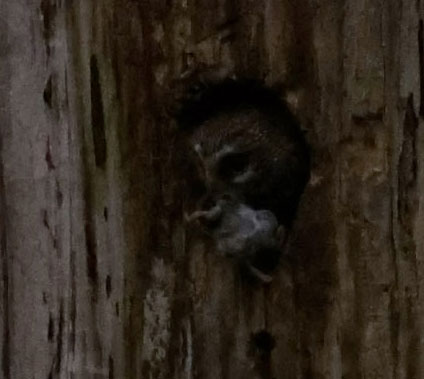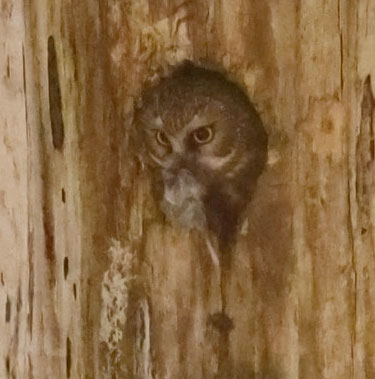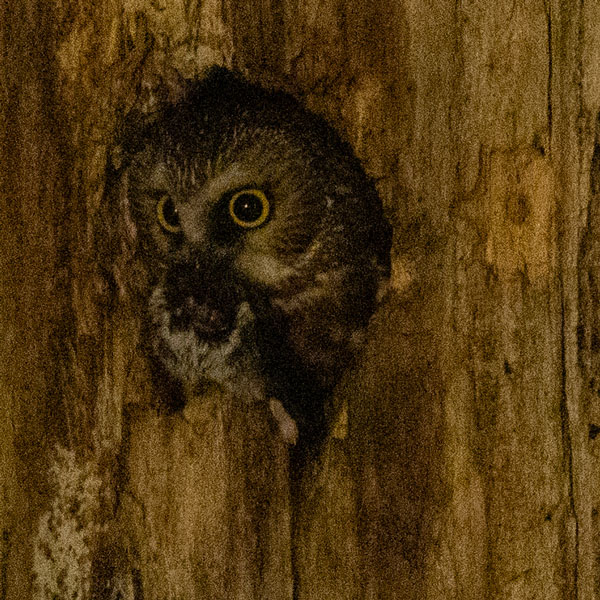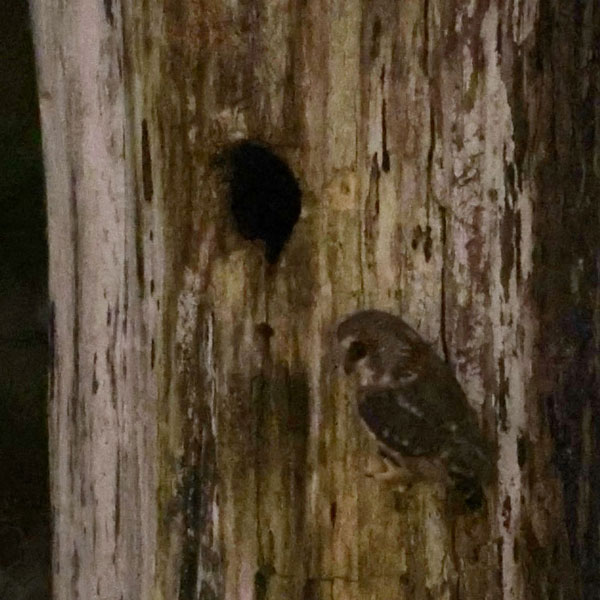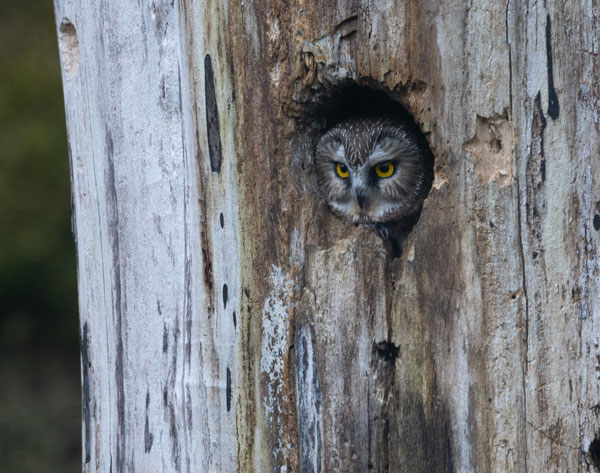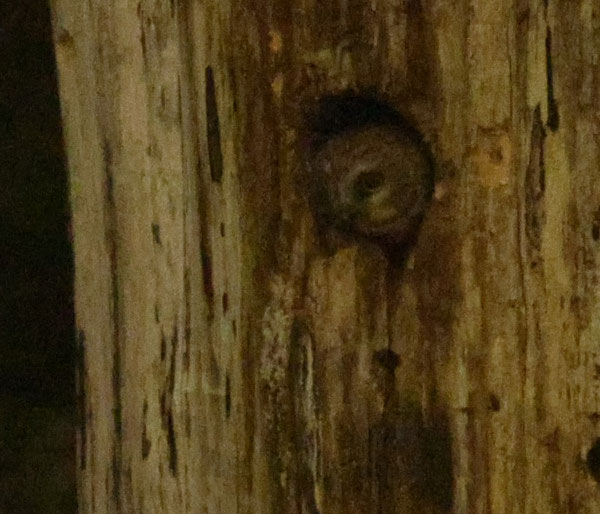|
Northern Saw-whet Owls
Night Photography
Our early overnight photos of the owl depended on house lights. The owl chose our backyard so presumably didn't mind the level of light the nest gets from room lights being on for the evening plus a few exterior lights on until midnight. We did make a point of leaving room lights on a little more than usual, but we didn't want to do anything that would stress the owl. Maybe it even likes a little bit of light in the yard for hunting mice.
We kept running time lapse sequences during the day and into the night. Although the images are not very clear because of the low light, we saw an interesting behavior: the owl displaying a mouse, held in its beak, dangling out the entrance to the nest.
We got a better photo a couple of nights later. We saw this behavior many times.
Now we had a challenge: how could we get better photographs at night?
For the photo above, we were using our fastest telephoto lens, a 70-200mm f/2.8 zoom. It's a nice lens, but does not quite have the reach we want for a small owl 40 feet away. Time for another trip to Glazer's. The first lens we rented was an 800mm f/5.6, an amazing telephoto lens, but too slow for these nighttime photos. Canon also makes, and Glazer's rents, a 400mm f/2.8 and a 600mm f/4. We rented them both to test for the weekend (which Glazer's treats as a one-night rental) and got the best results with the 400mm, so we kept that for a week.
During this time, we were running two cameras. One was using the rented 400mm f/2.8 lens to shoot high-resolution RAW images every 10 seconds and the other was using our 70-200mm f/2.8 lens to create a timelapse movie. The movie makes it easy to review 3,600 images from a 10-hour run. Whenever something appeared in the movie, we'd go find the corresponding image from the stills for processing. Sometimes an action is very brief and the two cameras get different shots, or one misses it.
One such morning, there was exactly one frame in the timelapse video that showed an owl on the snag outside the nest. The corresponding still photo also showed an owl outside, but it was blurry. Whatever was going on, it was brief and the owl must have been moving when the still camera fired, so our best shot was a frame grab from the video.
While we were working on the night photography, we were still shooting during the day using a 100-500mm f/4.5-7.1 zoom. It has more reach than the 400mm and being a bit slower is no issue during daylight. This is our first best daylight shot so far.
Our next challenge was a trip we had planned before the owl showed up. Since we were going to be away for a week and half, we returned the rental lens. To keep monitoring the owl action, we set up two cameras, one with the 200mm f/2.8 for nights and other with the 400mm f/5.6 for better telephoto during the day. Both cameras were set to take a medium resolution JPEG every 20 seconds with enough storage to run the entire time we were gone. One camera ran for a bit over six days and the other for almost seven before something glitched and they stopped taking photos.
When we got home, we were pleased to find that we still had an owl in the nest as of the latest photos.
While we were away, we had things in motion to greatly improve our nighttime photography.
Next Up: Infrared |
|
|
©1996-2025 Tom and Cathy Saxton. You may not copy or reproduce any content from this site without our consent.
